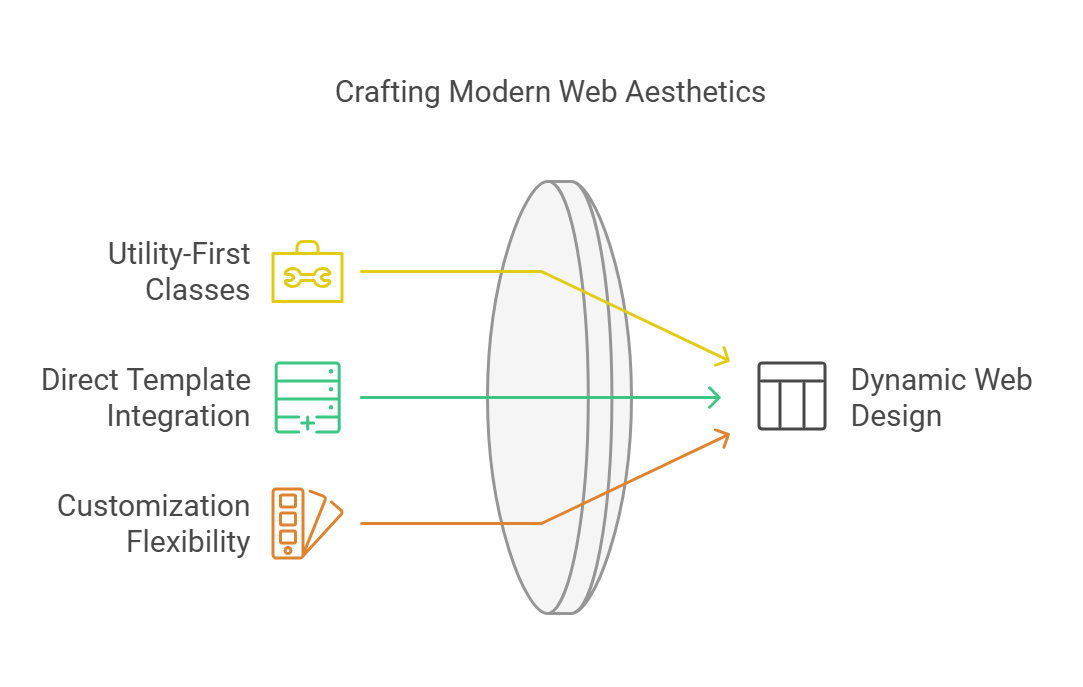Learn how to use Django Tailwind and AWS to streamline your projects on GitHub. Follow our step-by-step guide to boost your development process with essential tools.
Django, Tailwind CSS, and AWS Fargate together create a powerful stack for modern web development. Combining the robust backend capabilities of Django, the aesthetic flexibility of Tailwind CSS, and the scalability of AWS Fargate, you can create a seamless deployment pipeline using GitHub. This article explores how to integrate these technologies and focuses on leveraging their best features to streamline your web app development and deployment.Django Tailwind and AWSDjango Tailwind and AWSDjango Tailwind and AWSDjango Tailwind and AWSDjango Tailwind and AWSDjango
Step 1: Setting Up the Django Project
- Install Django: Ensure you have Python installed, then install Django using pip:
pip install django
2.Start a New Project:
django-admin startproject myproject
3.Run the Development Server:
python manage.py runserver
Visit http://127.0.0.1:8000 to confirm the project is running.
Step 2: Integrating Tailwind CSS
Tailwind CSS allows you to design directly in your templates with utility-first classes.
- Install Tailwind CSS:
npm install -D tailwindcss postcss autoprefixer npx tailwindcss init
2. Configure Tailwind: Modify the tailwind.config.js file to include your Django templates:
module.exports = {
content: [
"./templates/**/*.{html,js}",
"./static/**/*.{html,js}"
],
theme: {
extend: {},
},
plugins: [],
};
3. Link Tailwind in Templates: Generate the Tailwind CSS file and include it in your Django templates:
npx tailwindcss -i ./static/css/input.css -o ./static/css/output.css --watch
Add the compiled CSS to your base template:
<link href="/static/css/output.css" rel="stylesheet">
Step 3: Deploying with AWS Fargate
AWS Fargate is a serverless compute engine for containers, perfect for deploying your Django project.
- Containerize the Django App:Create a
Dockerfilefor your project:
module.exports = {
content: [
"./templates/**/*.{html,js}",
"./static/**/*.{html,js}"
],
theme: {
extend: {},
},
plugins: [],
};
2. Push the Image to Amazon ECR:
-
- Authenticate Docker with ECR:
aws ecr get-login-password --region <region> | docker login --username AWS --password-stdin <account_id>.dkr.ecr.<region>.amazonaws.com
- Build and push the image:
docker build -t myproject . docker tag myproject:latest <account_id>.dkr.ecr.<region>.amazonaws.com/myproject:latest docker push <account_id>.dkr.ecr.<region>.amazonaws.com/myproject:latest
Operating System is best for 3D Printing
3. Set Up Fargate Service:
-
- Create a Task Definition in the AWS ECS Console.
- Define the container image, CPU, and memory requirements.
- Deploy the service using the Fargate launch type.
Step 4: Automating with GitHub Actions
GitHub Actions can automate the CI/CD pipeline for your Django app.Tailwind and AWSDjango Tailwind and AWSDjango Tailwind and AWS
- Create a Workflow File:Inside
.github/workflows/deploy.yml, define the deployment process:
name: Deploy to AWS Fargate on: push: branches: - main jobs: deploy: runs-on: ubuntu-latest steps: - name: Checkout Code uses: actions/checkout@v3 - name: Set up Python uses: actions/setup-python@v3 with: python-version: '3.9' - name: Install Dependencies run: | pip install -r requirements.txt - name: Build and Push Docker Image run: | aws ecr get-login-password --region <region> | docker login --username AWS --password-stdin <account_id>.dkr.ecr.<region>.amazonaws.com docker build -t myproject . docker tag myproject:latest <account_id>.dkr.ecr.<region>.amazonaws.com/myproject:latest docker push <account_id>.dkr.ecr.<region>.amazonaws.com/myproject:latest - name: Update ECS Service run: | aws ecs update-service --cluster <cluster_name> --service <service_name> --force-new-deployment
2.Commit and Push Changes: Push your changes to trigger the workflow.
Step 5: Testing and Optimization
- Test your app thoroughly after deployment to ensure all components work seamlessly.
- Use AWS CloudWatch for monitoring logs and optimizing the performance of your Django app.
FAQs
- What is AWS Fargate? AWS Fargate is a serverless compute engine for containers that eliminates the need to manage servers or clusters.
- Why use Tailwind CSS with Django? Tailwind CSS provides a utility-first design approach, making it easy to create responsive and visually appealing user interfaces.
- How do I manage Django static files on AWS Fargate? Use Amazon S3 to store static files and configure Django to serve them from there.
- What is the benefit of using GitHub Actions for CI/CD? GitHub Actions automates the deployment pipeline, ensuring quick and efficient code delivery to production.
- How do I secure my AWS resources? Use AWS IAM roles, security groups, and encryption to protect your AWS resources from unauthorized access.

